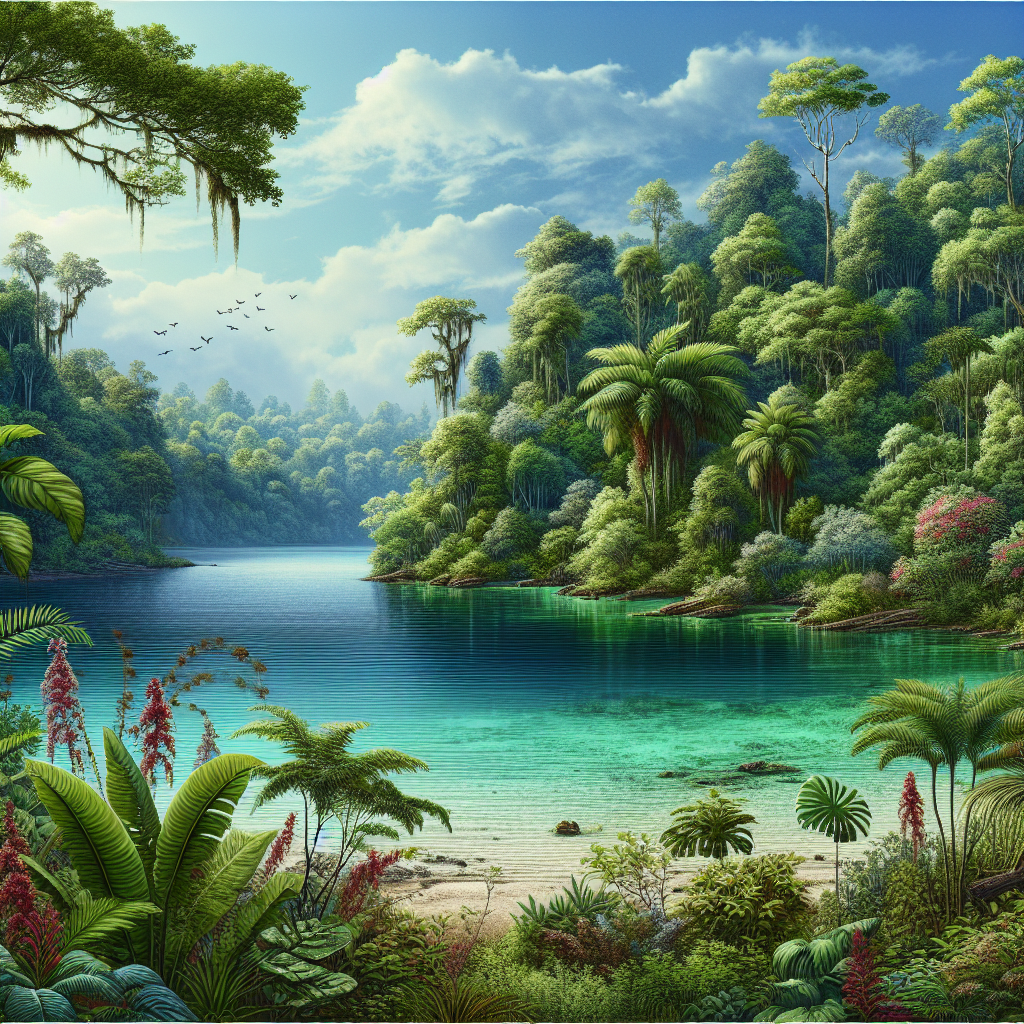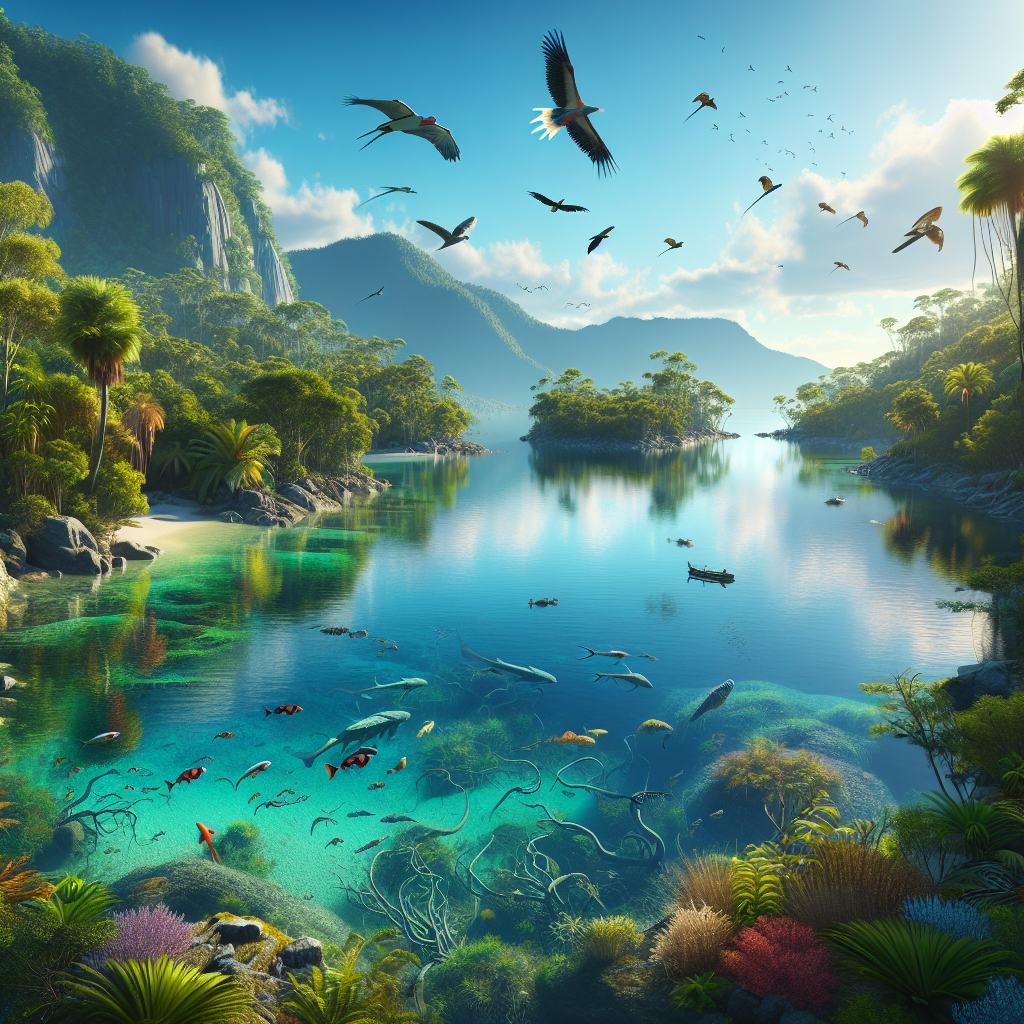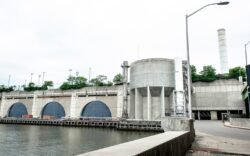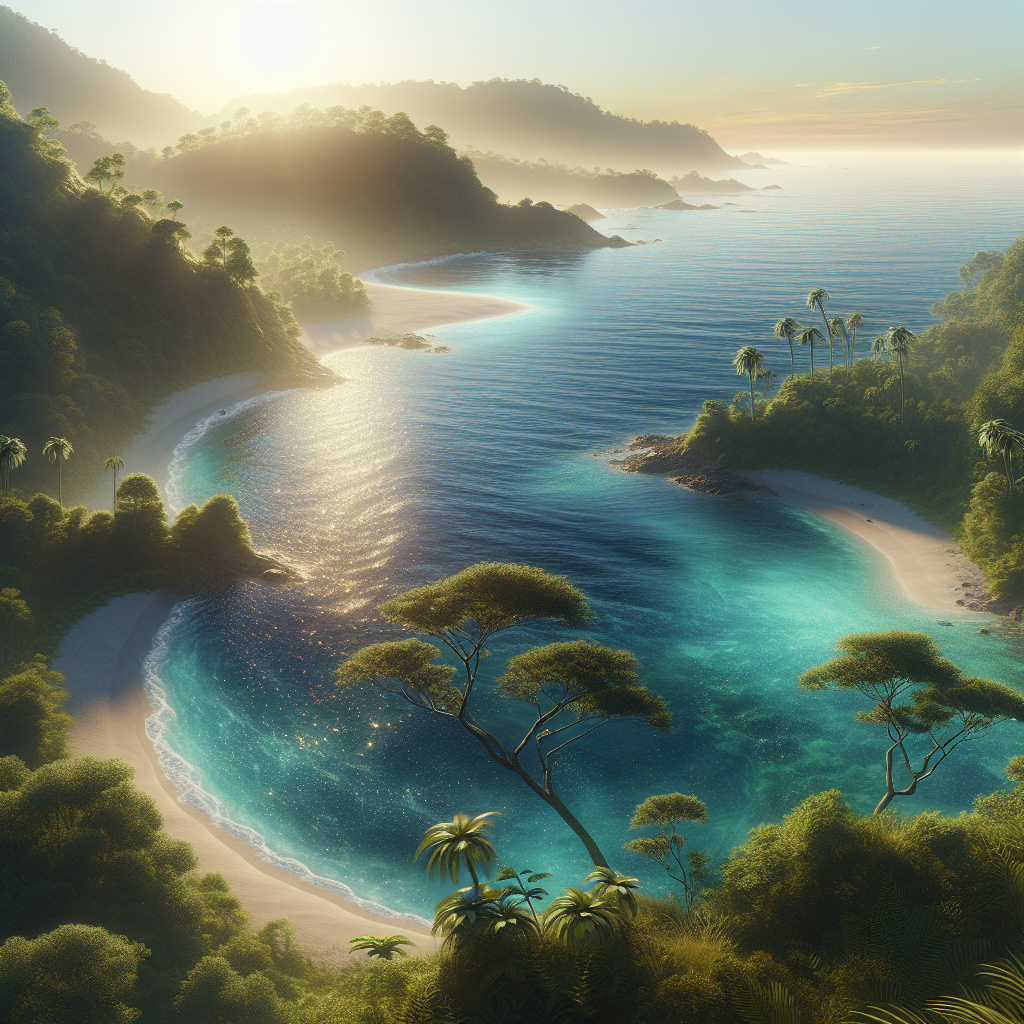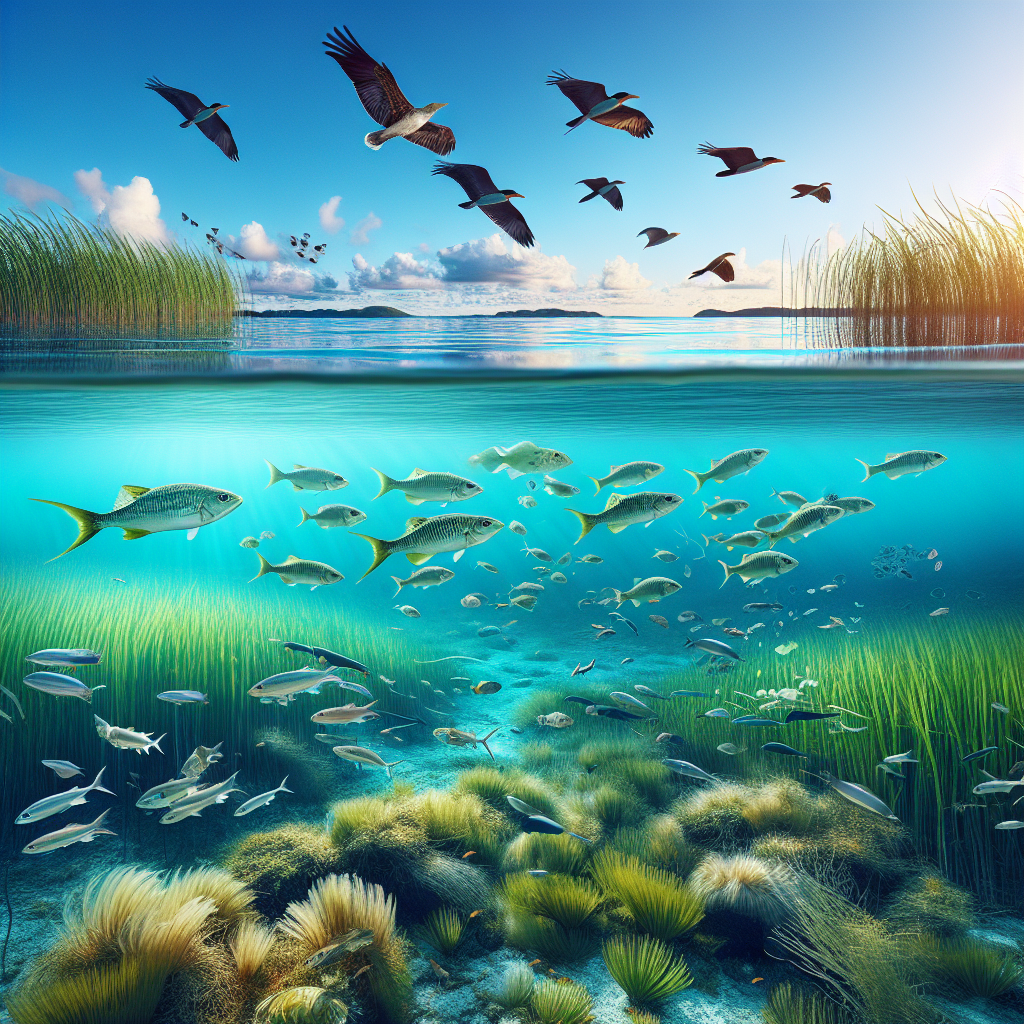Wastewater Lagoons: Natural Treatment Solutions Explained
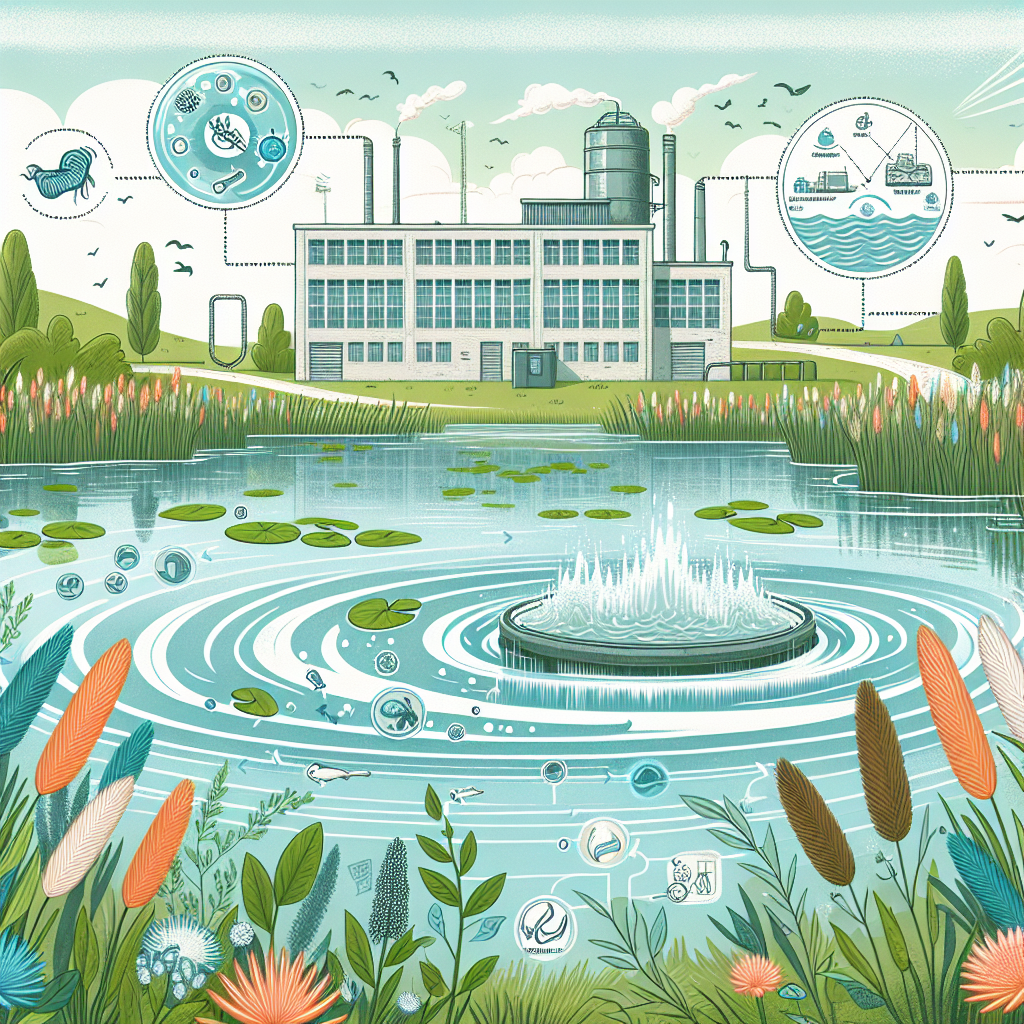
Wastewater Lagoons: Natural Treatment Solutions Explained
Introduction
Welcome to the fascinating world of lagoons! If you’ve ever gazed out at a serene body of water, perhaps you wondered, what are lagoons? These unique aquatic ecosystems are more than just pretty views; they play a crucial role in our environment and can even serve as natural treatment solutions for wastewater. Think of them as nature’s very own filtration systems, quietly working to purify water while providing habitats for a plethora of wildlife.
But before we dive into the nitty-gritty, let’s lay down some groundwork. A lagoon is typically defined as a shallow body of water separated from a larger body by a barrier, such as sandbars or coral reefs. They come in various flavors freshwater, brackish, and saltwater each hosting distinct ecosystems and wildlife. From the vibrant coastal lagoons teeming with marine life to the tranquil freshwater lagoons that serve as peaceful retreats, these water bodies are as diverse as they are essential.
In this blog post, we’ll explore the different types of lagoons, their formation processes, and their unique characteristics. We’ll also delve into the importance of these natural wonders for both humans and nature alike. Spoiler alert: they’re not just pretty faces! Lagoons offer economic benefits through recreational activities like fishing and tourism while also supporting biodiversity.
Did you know? Lagoons can be found all over the world from tropical paradises to temperate climates each with its own unique charm and ecological significance!
So grab your virtual snorkel gear as we embark on this journey through lagoon landscapes. By understanding what lagoons are and how they function, we can better appreciate their value and advocate for their conservation against modern threats like pollution and habitat degradation.
What Are Lagoons?
So, let’s dive into the deep end of the lagoon pool, shall we? Lagoons are shallow bodies of water separated from larger bodies of water, like oceans or lakes, by natural barriers such as sandbars, coral reefs, or even human-made structures. Think of them as nature’s cozy nooks where various aquatic life can thrive!
Now, if you’re wondering about the lagoon definition, it’s pretty straightforward: lagoons are essentially transitional zones between land and sea. They come in various flavors freshwater, brackish, and saltwater each with its own unique characteristics and ecosystems.
Types of Lagoons
- Freshwater Lagoons: These lagoons are filled with fresh water and often found inland. They’re like the introverts of lagoons quiet and serene.
- Brackish Water Lagoons: A delightful mix of fresh and saltwater, these lagoons are often found where rivers meet the sea. Think of them as the social butterflies that get along with both sides!
- Saltwater Lagoons: Typically found along coastlines, these lagoons are more like the party animals full of marine life and vibrant ecosystems.
The Difference Between Lagoon and Lake
You might be scratching your head thinking about how a lagoon differs from a lake. While both are bodies of water, lagoons are usually influenced by tidal actions and have a direct connection to larger water bodies. Lakes? They’re more like isolated retreats without that salty breeze! So if you ever find yourself at a lagoon versus a lake, just remember: one is more likely to have beach vibes while the other is all about that mountain serenity.
Comparison with Estuaries
Lagoons often get lumped together with estuaries because they share some similarities both are vital habitats for wildlife and serve as nurseries for fish. However, estuaries are where freshwater from rivers meets saltwater from the ocean directly. In contrast, lagoons tend to be more sheltered from oceanic influences.
Key Takeaway: Understanding what lagoons are helps us appreciate their role in our ecosystem. Whether they’re freshwater havens or bustling saltwater communities, they provide essential habitats for countless species!
Lagoon Formation and Characteristics
So, what are lagoons, and how do they come to be? Think of lagoons as nature’s way of creating a cozy aquatic nook. These unique bodies of water can be found in various forms, each with its own distinct characteristics. Let’s dive into the fascinating world of lagoon formation and their key traits!
How Do Lagoons Form Naturally?
Lagoons typically form through a combination of geological processes and environmental conditions. They can arise from:
- Coastal barriers: Sandbars or coral reefs that shield a section of the ocean, leading to the creation of a tranquil water body.
- River deltas: Where rivers meet the sea, depositing sediments that can trap water.
- Glacial activity: Melting glaciers can create depressions that fill with water over time.
The Geology of Lagoons
The geological makeup of lagoons plays a crucial role in their characteristics. They often feature:
- Soft sediments: Silts and sands that provide a habitat for various organisms.
- Barrier islands: These natural structures help protect lagoons from direct wave action.
- Variable depths: Lagoons can have shallow areas perfect for plant growth and deeper zones for fish.
The Hydrology of Lagoons
The hydrological cycle within lagoons is fascinating. They often experience:
- Tidal influences: Depending on their location, tides can significantly affect lagoon water levels.
- Freshwater inputs: Rivers and streams contribute to the overall salinity levels, leading to different types like freshwater lagoons or brackish water lagoons.
- Evaporation rates: In warmer climates, evaporation can concentrate salts in the lagoon, creating unique ecosystems.
The Role of Tides in Lagoon Formation
Tides are like nature’s clock for lagoons. They help shape these ecosystems by:
- Regulating salinity levels: Tides bring in saltwater during high tide and allow freshwater to flow out during low tide.
- Creating habitats: The fluctuation between high and low tides provides diverse environments for various species.
- Promoting nutrient exchange: Tidal movements help distribute nutrients essential for lagoon wildlife.
Lagoons are not just beautiful; they are vital ecosystems! Their unique formation processes contribute to rich biodiversity and provide essential services such as flood protection, nursery grounds for marine life, and recreational opportunities for humans.
Lagoon Ecosystems and Biodiversity
When we talk about what are lagoons, we’re diving into a world teeming with life! These unique aquatic systems are not just pretty bodies of water; they are vibrant ecosystems that play a crucial role in supporting a diverse array of wildlife.
Lagoon Habitats and Wildlife
Lagoon habitats vary widely, from the brackish waters of coastal lagoons to the freshwater lagoons tucked away inland. Each type offers its own unique set of conditions that support different species. For instance, coastal lagoons often serve as nurseries for marine life, while freshwater lagoons can be hotspots for migratory birds.
Flora and Fauna of Lagoons
The flora and fauna found in lagoons are as diverse as a box of chocolates there’s something for everyone! You’ll find everything from seagrasses and mangroves to a plethora of fish species. In fact, many lagoon ecosystems boast higher biodiversity than nearby oceans or lakes!
Lagoon Biodiversity and Ecosystem Services
But wait, there’s more! Beyond being beautiful, lagoons provide essential ecosystem services. They act as natural filters, improving water quality by breaking down pollutants. This makes them invaluable not only to wildlife but also to humans who rely on clean water sources.
Did you know? Lagoons can support up to 30% more biodiversity than adjacent marine environments!
Marine Life in Lagoons
The marine life in lagoons is nothing short of spectacular. From colorful coral reefs in saltwater lagoons to lush aquatic plants in freshwater ones, these ecosystems are bustling with activity. Fish, crabs, mollusks, and various other organisms find refuge here, creating complex food webs that sustain both the lagoon’s health and the communities around them.
“Lagoons serve as critical habitats for over 50% of the world’s fish species at some stage in their lives.”
However, it’s important to recognize that these ecosystems face threats from pollution and human activities. Understanding how these systems function can help us protect them better.
The Importance of Lagoon Conservation
Lagoon conservation is not just an environmental concern; it’s an economic one too! Healthy lagoons support fisheries, tourism, and recreational activities like kayaking or birdwatching. By prioritizing their protection, we ensure that future generations can enjoy these natural wonders.
In summary, understanding lagoon ecosystems helps us appreciate their role in biodiversity and the services they provide. So next time someone asks you about what are lagoons, you can confidently share how vital they truly are!
Types of Lagoons by Water Salinity
When diving into the world of lagoons, one of the most intriguing aspects is their water salinity. This factor not only influences the types of organisms that can thrive in these ecosystems but also plays a significant role in their overall health and functionality. So, let’s break down the main types of lagoons based on their salinity levels!
Freshwater Lagoons
Freshwater lagoons are like the introverts of the lagoon family shy and contained, often fed by rivers or streams. These lagoons typically have a low salt concentration and provide vital habitats for various species. Think about it: if you were a fish, would you prefer a cozy freshwater lagoon or a bustling saltwater one? Exactly! Freshwater lagoons are essential for many freshwater species, making them crucial for lagoon biodiversity.
Brackish Water Lagoons
Now, let’s spice things up with brackish water lagoons! These are the hybrids of the lagoon world where fresh and saltwater meet and mingle. They usually occur where rivers meet the sea, creating a unique cocktail that supports diverse wildlife. Brackish water lagoons are home to fascinating organisms that have adapted to fluctuating salinity levels. If you’re looking for biodiversity, this is where it’s at!
Saltwater Lagoons
Finally, we arrive at saltwater lagoons the salty sailors of this aquatic journey! These lagoons are typically found along coastlines and are influenced by ocean tides. They boast high salinity levels and host an array of marine life adapted to these conditions. From vibrant seagrass beds to bustling fish populations, saltwater lagoons play an essential role in coastal ecosystems.
Key Takeaway: Understanding the different types of lagoons by water salinity helps us appreciate their unique ecosystems and highlights the importance of conserving these natural resources.
Lagoon Climate Conditions and Geography
When you think about what are lagoons, picture a cozy little water body nestled between landmasses, often with unique climate conditions that shape their very essence. These enchanting ecosystems can be found in various forms, primarily categorized by their geographical locations and the salinity of their waters.
Tropical Lagoons vs. Temperate Lagoons
Tropical lagoons are like the sunbathers of the lagoon family warm, vibrant, and teeming with life. Found in regions where palm trees sway and temperatures rarely dip below 20°C (68°F), these lagoons boast rich biodiversity, including colorful coral reefs and a plethora of marine life. Think of them as the party spots for fish!
On the flip side, temperate lagoons have a more laid-back vibe. Located in areas with four distinct seasons, they experience temperature fluctuations that can affect their ecosystem dynamics. The wildlife here is equally fascinating but adapted to handle cooler waters during winter months.
Lagoon Climate Conditions and Their Impact on Ecosystems
The climate conditions surrounding lagoons are crucial for maintaining their health and biodiversity. For instance:
- Temperature: Warmer waters in tropical lagoons promote faster biological processes, leading to higher productivity.
- Precipitation: Rain can dilute salinity levels in brackish water lagoons, impacting organisms adapted to specific salinity ranges.
- Tides: The ebb and flow of tides introduce nutrients into these systems while also influencing sediment transport think of it as nature’s way of cleaning house!
Did You Know? Lagoons can act as natural filters for pollutants before they reach larger bodies of water, making them essential for environmental health!
The geography surrounding lagoons also plays a pivotal role. Coastal lagoons often form behind barrier islands or coral reefs, while inland lagoons might arise from geological depressions or glacial activity. Each type has its own set of lagoon characteristics that define its ecosystem.
This interplay between climate conditions and geography not only shapes the lagoon ecosystem but also influences human activities such as fishing, tourism, and conservation efforts. Understanding these factors is vital for protecting these natural treasures from threats like pollution and climate change.
section >
section >
section >


